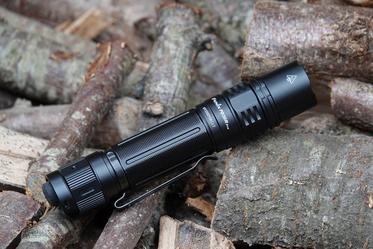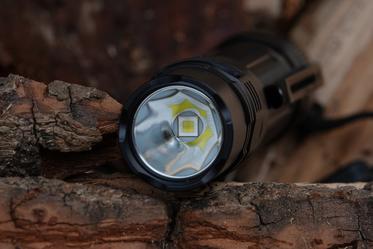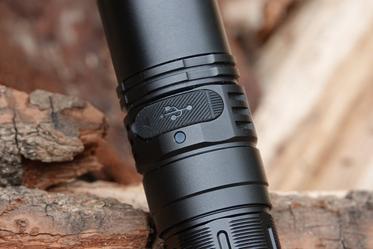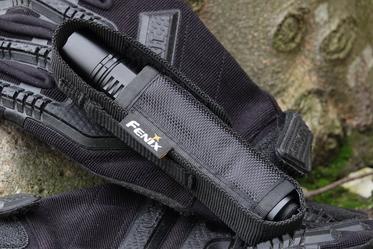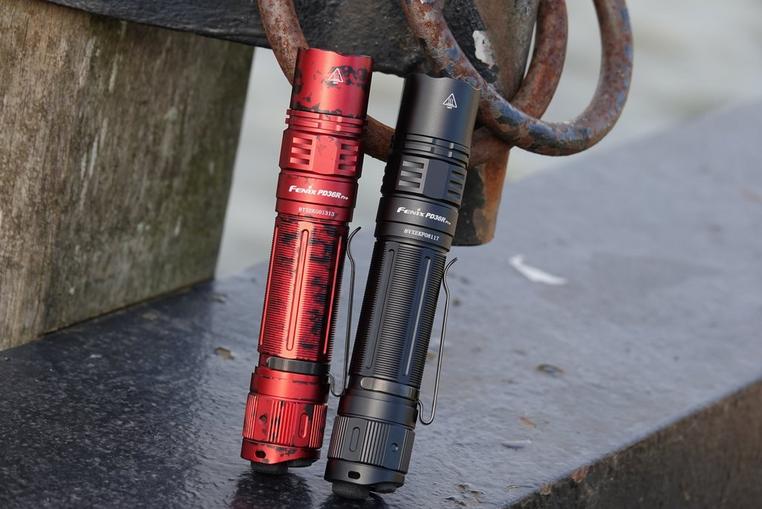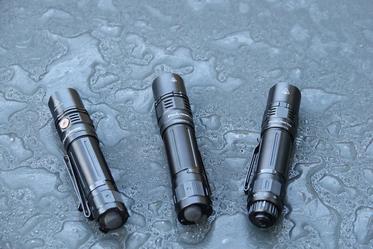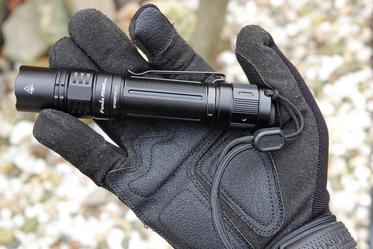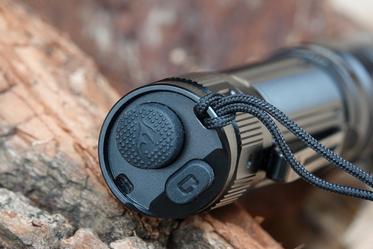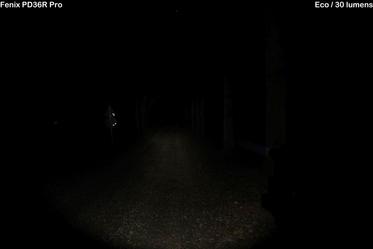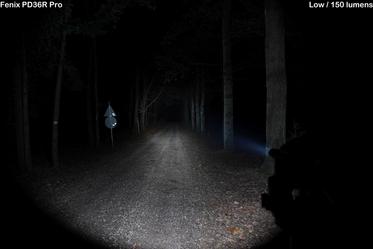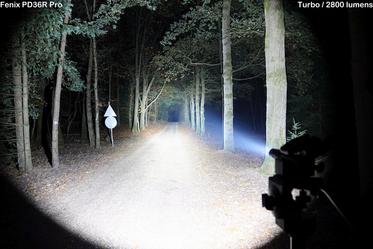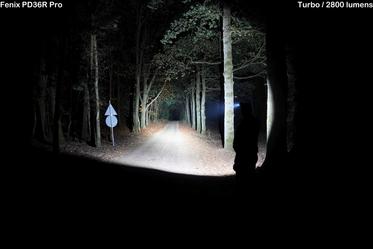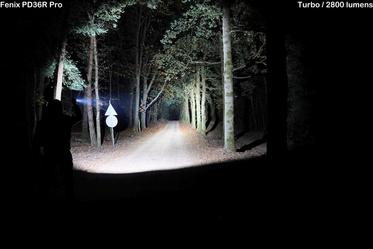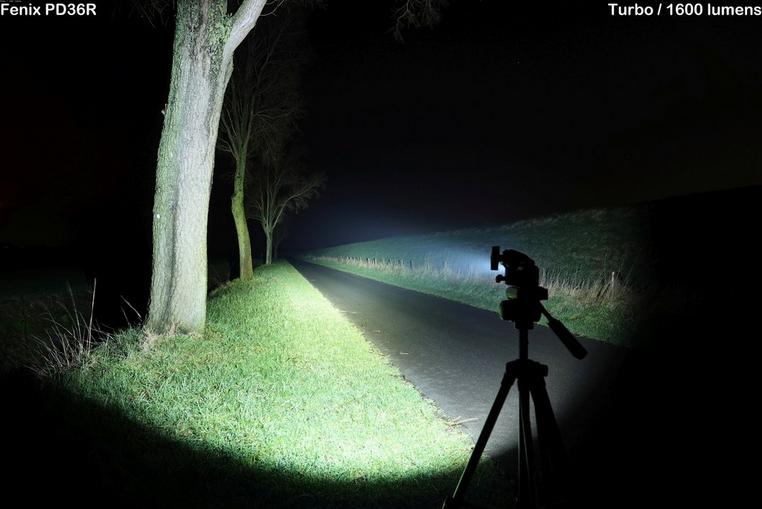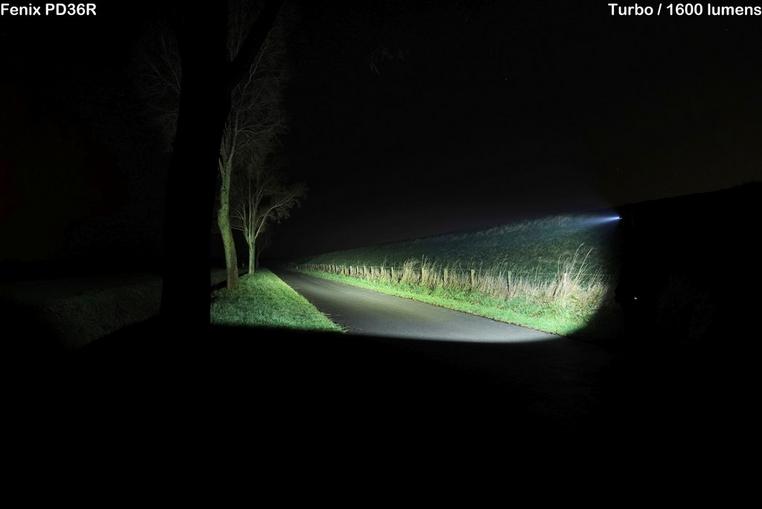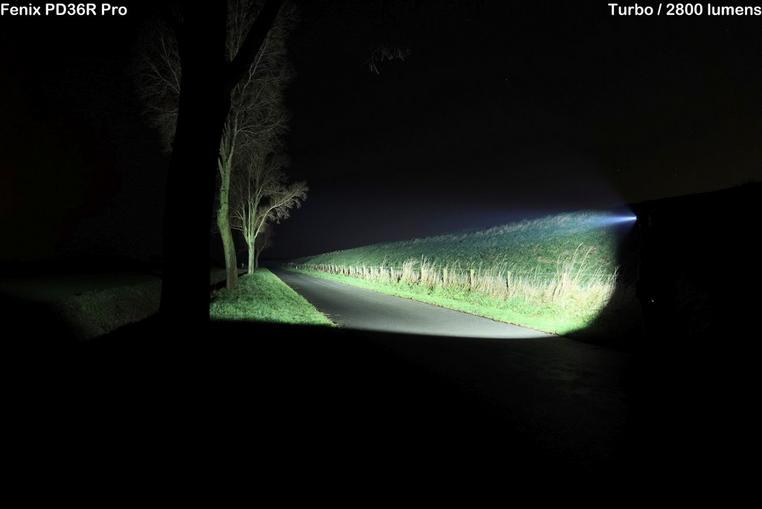Fenix PD36R Pro | Expert Review by Koen van der Jagt
The fact that Fenix's PD36 series is a huge success is clear, given that the series has recently been expanded to include a third version: the PD36R Pro. They all have the same size, but different specifications; both in terms of controls and light image. The latest version, the PD36R Pro, is in the spotlight for this review, but I will also compare the others of this series. Continue reading!
Contents
First impressions
The familiar box holds few surprises, although I appreciate the new-and-improved plastic that holds the flashlight and its accessories. Now, everything stays in place, and it's also much easier to put it back in the box. The light comes with a battery, holster, charging cable and booklets. As is common these days, a charger is missing. Other than that the contents are fine.
The PD36R Pro feels like an old friend, as it's very clearly a Fenix product. It's a little thicker than the first version, the PD36R. This is mainly because the 21700 battery is a size larger than the PD36R's 18650. The flashlight has a solid feel to it, and the finish is truly astounding: the light source is neatly centred, the engraving is nicely aligned as well, and there are no blemishes in the 'paint' (or the anodisation). The lines of the design are almost identical to the PD36R, which is understandable, as there is not much to improve from the original well-thought-out design. When you look at the PD36R and PD36R Pro side by side, three differences immediately stand out: the mode button has moved to the back on the PD36R Pro, and the PD36R Pro's rubber mode switch no longer has a built-in battery indicator; it is now placed inside the head of the light. The third difference is the light source: the Luminus SST-40 LED has given way to a more powerful LED, a Luminus SFT-70. If you look closely, you can see that this LED consists of four segments and that it's missing a lens, which makes it flat. Because the switch on the back sticks out on the Pro version too, none of the 36-series versions can stand on their tail end. The carrying clip remains unchanged, but it's long and strong enough to hold the flashlight securely in place. You can easily make the loop of the lanyard bigger or smaller, so it will fit any wrist. It's easy to open up the flashlight; I often advise people to grease the screw threads regularly to prolong their lifespan. The inside of the flashlight also looks alright, a sturdy spring in the end cap cushions any shocks.
All in all, I'm very pleased with this first look at the PD36R Pro; I really have nothing to complain about in terms of build quality and finish.
Here are some more pictures of the 36-series side by side. As you can see, they barely differ in size. The real differences can be found in controls and light sources. The PD36R has the smallest LED (SST-40), a mode switch on the side made from steel with a battery indicator, and the power button on the back. The Pro version has a stronger SFT-60 LED, and both rubber switches are on the back. The PD36 TAC has the biggest LED (SST-70) and a mechanic switch on the back, specifically designed for tactical use.
When and how
The practical size, the output and the fact that you can operate the light completely with one hand make the PD36R Pro an all-rounder that can handle a lot of situations. The light is primarily intended for those who work in security or law enforcement. With the remote control (optional) you can attach this flashlight to a weapon to make it a part of your tactical equipment. Personally, I tend to always carry a flashlight like this one in winter or autumn, It fits perfectly in my coat pocket without being in the way. You can also use the flashlight indoors, though the eco mode is a bit too bright for reading, in my opinion. Word of advice if you want to use the flashlight indoors: if you use a diffuser, you're less likely to blind yourself.
Controls and comfort
Even though you need to bring your own charger (not a problem for most people, I imagine), charging the battery is very easy. You will notice that charging a 21700 battery will take a little longer because of its huge capacity. It may take between three or four hours for a fully depleted battery to be recharged. When the indicator light turns green again, the battery is fully charged.
The main difference with the PD36R are the controls: the mode switch has been relocated to the back of the flashlight. This allows you to control both buttons with your thumb, and you never have to waste time searching the mode switch again. To prevent any confusion, the back features a sloped area where the mode switch is located. Moreover, the mode switch has a different shape, and is placed significantly lower than the on/off switch. The raised edge on the back is interrupted where the switch is located, so you actually have your thumb in the right position right away when you hold the PD36R Pro. Very nicely done, Fenix!
Typically, operating a Fenix product requires little practice and the PD36R Pro is no exception. The controls of this flashlight are very intuitive. Simply press the power button halfway down for a momentary-on, or fully down to turn the light on constantly. You can then use the mode button to choose the light intensity. The flashlight will recall the previously used output if you turn the light off and on again. In addition to the five light intensity modes, this flashlight also features a blinding strobe mode, which you can activate by holding down the mode button for longer than half a second. If you do this when the light is turnedd off, the strobe flashes as long as you hold the button down, but when the light is switched on, the strobe is automatically turned on continuously. In the same way, you can return to regular light modes or switch the light off. A shortcut key for the turbo is missing and would be a good addition in my opinion. You'll get a quick update on the battery status when you turn on the light; as long as the indicator light is green or flashing green, you're good to go. It's only when the indicator starts to flash a red light that it's time to charge the battery. With a lower battery charge, the flashlight will automatically switch down to a lower light intensity to save power. The same thing happens if the head of the flashlight becomes hotter than 60 degrees Celsius.
The PD36R Pro is a flashlight with no unnecessary fuss, as far as options are concerned, but the controls are really easy to use: it is almost impossible to make a mistake, which I think is worth a lot given its target audience.
This is what I love about the PD36R Pro
The overall quality, the improved user interface and the powerful and wide beam are the strong points of this flashlight. You can illuminate a large area (far and wide), with a compact flashlight that fits in the palm of your hand. Another great feature is that you can pair a remote control with this flashlight.
Things that could be better
I think it's a shame that the capacity of the eco-mode has been increased, 30 lumens is now the minimum output. For orientation purposes or when you're indoors, this mode is too bright. I would like to have a lower (additional) mode of 5 lumens or even less, with the added advantage that the battery charge would last even longer. A 'shortcut' to activate the turbo mode would be a nice addition.
Value for money?
I think the PD36R Pro isn't cheap, it's quite the price tag for a flashlight. On the other hand, you do get a product that delivers great results (2800 lumens is quite a lot of light), in a compact little package that you can carry with you wherever you go. If you buy this flashlight, you are investing in a piece of solidity that you can and certainly will enjoy for years to come.
My conclusion
With this PD36R Pro, Fenix takes it up a notch compared to the first version. And that while the size remained unchanged. The Pro version's controls are a little easier, and it has significantly more power. On the other hand, I do miss the economical low setting of the PD36R. Tactically speaking, the PD36R Pro has the advantage thanks to the dual switch on the back and the ability to connect a remote control. I also appreciate the improved beam with its wider hotspot and larger range. The construction quality and finish are great!
One more thing
The red camo version is a limited edition that enthusiasts will love. So be quick!
Beamshots
The Luminus SFT-70 gives the PD36R Pro both its light intensity and it's above-average reach. A striking feature is the large hotspot that makes it easy to keep an overview. It also leaves enough spill so you can light up a large part of your path at the same time, while also reaching distances of up to a few hundred metres when it is completely dark. The colour of the light is a cool white, and doesn't have a green or blue hue. We love to see it! The first location is a dark forest road in the Veluwe; we start with the five light modes. Another thing about the turbo mode: you won't be able to use this for a really long time, as the flashlight heats up relatively quickly in this mode. After a few minutes, the flashlight will lower the light intensity to avoid overheating. Below, you will see that the high setting (1000 lumens) also gives more than enough light and proves to be very useful. This high stand can be used for much longer periods at a time and has fewer restrictions.
Below, you see the same location again, now with the flashlight in hand. This way, you can clearly see the proportions of the light profile relative to myself.
For the second part of this test, I will visit a completely different location: a river embankment with lots of fresh green grass and just some bare trees. A great place to compare the entire series! This is where the differences literally come to light: compared to the PD36R, the Pro version has significantly more range and output; the PD36 TAC has an even wider beam than the Pro, but its reach isn't as far.
Once again, the same location with the lights in hand, and all at maximum capacity. Check it out!
Koen van der Jagt
Ever since he could walk Koen has been interested in lights, wires and batteries. As a child he was always working with dyno torches, bike lights and electrical boxes. The krypton and halogen lights were replaced by LED lights. A couple of years ago he discovered the ‘professional’ stuff. His first brands were Led Lenser and Fenix. Photography is also one of his hobbies. In addition to nature and meteorology Koen loves to show others what a light can do and what its beam looks like at night. Koen’s reviews can often be found on forums such as candlepowerforums.com and taschenlampen-forum.de. Throughout the years Koen has collected lights in practically any category: from small and compact to enormous powerhouses.



